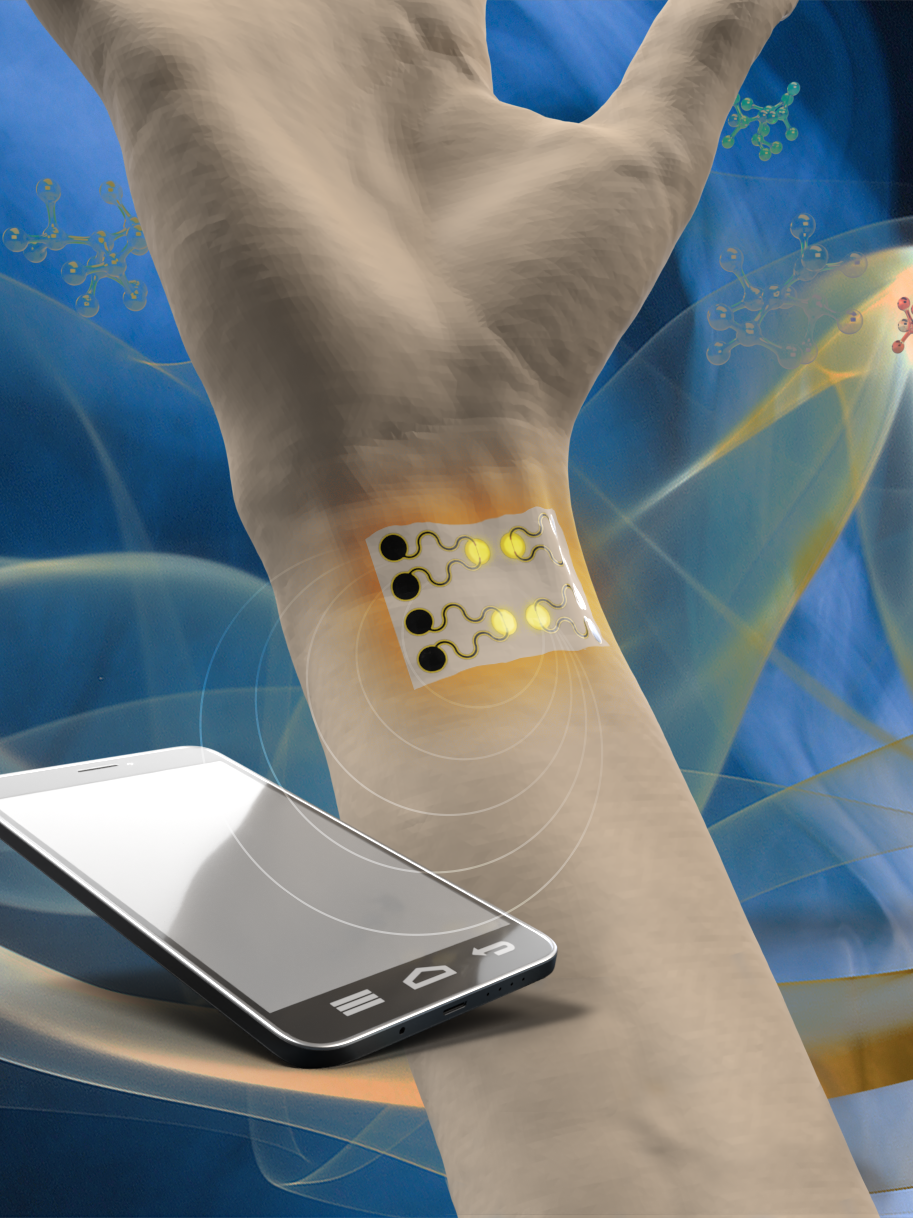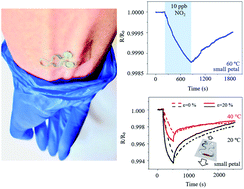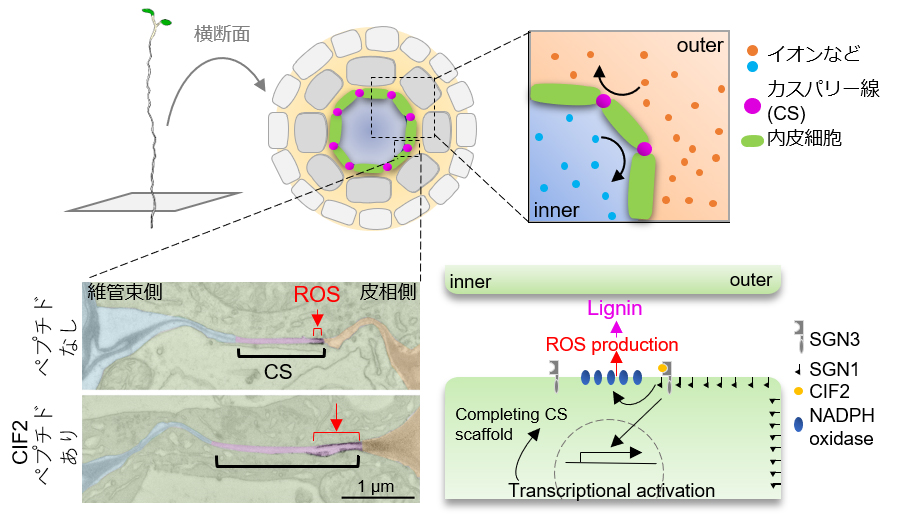(A wearable gas sensor for health and environmental monitoring)
2020/1/15 アメリカ合衆国・ペンシルベニ ア州立大学

・ PennState とノースイースタン大学が、環境や健康状態をモニタリングする、高感度ウェアラブルガスセンサーを開発。
・同センサーデバイスは、セルフヒーティング機構を利用してセンサー感度を向上させるため外部ヒーターが不要で、迅速なリカバリーとリユースが可能。クリーンルームでの高コストで時間のかかるリソグラフィープロセスによる作製も不要。
・センシングでは、その高アスペクト比により感度を向上させるナノ材料の使用が望まれるが、そのためには微小電極の利用が必須。
・今回開発のセンサーは、CO2 レーザーを用いてナノ材料の多孔質シングルラインをパターニングして作製。ガスや生体分子、将来的には化学物質を検出する。
・同センサープラットフォームの非センシング部には、銀でコーティングした S 字電線を配置。同電線に導電すると、極めて大きな電気抵抗によりガスセンシング領域が局所的に加熱されるため、外部ヒーターが不要となる。同電線はスプリングのように伸縮し、ウェアラブルセンサーを身体の動きに適応させる。
・同センサーに使用したナノ材料は、還元型酸化グラフェン(rGO)と二硫化モリブデン(MoS2)、またはそれら両材料の組合せ、もしくは酸化亜鉛のコアと酸化銅のシェルから成る金属酸化物複合材の、ガスセンサー材料として広く利用される低次元ナノ材料と金属酸化物ナノ材料の 2 種類。個別の分子を選択的に検出する、10~100 個のセンサーを作製する予定。
・同センサーでは、車輌が排出する二酸化窒素(NO2)、また、それと共に酸性雨の原因となっている
二酸化硫黄(SO2)の検出に成功している。
・米国防脅威削減局(DTRA)が、神経や肺機能を損傷する化学・生物兵器の検出用に同ウェアラブルセンサーへの関心を示している。また、ある医療デバイス企業は、同センサー開発研究チームと協力し、身体からのガス状バイオマーカーや肺機能に影響する可能性のある環境汚染物質の検出等の、患者の健康状態のモニタリングに向けたセンサー製造のスケールアップを図っている。
・今後は高密度アレイの作製と信号の改善を試み、センサーの選択性を向上させる。機械学習(ML)による個別の分子の各信号の特定も視野に入れている。
・本研究は、PennState とノースイースタン大学のスタートアップファンディングとシードグラント、および米国立科学財団(NSF)が支援した。
URL: https://news.psu.edu/story/604190/2020/01/15/research/wearable-gas-sensor-health-and-environmental-monitoring
(関連情報)
Journal of Materials Chemistry A 掲載論文(アブストラクトのみ:全文は有料)Novel gas sensing platform based on a stretchable laser-induced graphene pattern with self-heating
capabilities
URL: http://dx.doi.org/10.1039/c9ta07855j
<NEDO海外技術情報より>
Abstract
Measurements of the gas sensing performance of nanomaterials typically involve the use of interdigitated electrodes (IDEs). A separate heater is often integrated to provide elevated temperature for improved sensing performance. However, the use of IDEs and separate heaters increases fabrication complexity. Here, a novel gas sensing platform based on a highly porous laser-induced graphene (LIG) pattern is reported. The LIG gas sensing platform consists of a sensing region and a serpentine interconnect region. A thin film of metal (e.g., Ag) coated in the serpentine interconnect region significantly reduces its resistance, thereby providing a localized Joule healing in the sensing region (i.e., self-heating) during typical measurements of chemoresistive gas sensors. Dispersing nanomaterials with different selectivity in the sensing region results in an array to potentially deconvolute various gaseous components in the mixture. The self-heating of the LIG gas sensing platform is first studied as a function of the applied voltage during resistance measurement and LIG geometric parameters (e.g., linewidth from 120 to 240 μm) to achieve an operating temperature from 20 to 80 °C. Systematic investigations of various nanomaterials demonstrate the feasibility of the LIG gas sensing performance. Taken together with the stretchable design layout in the serpentine interconnect region to provide mechanical robustness over a tensile strain of 20%, the gas sensor with a significant response (6.6‰ ppm-1), fast response/recovery processes, excellent selectivity, and an ultralow limit of detection (1.5 parts per billion) at a modest temperature from self-heating opens new opportunities in epidermal electronic devices.



